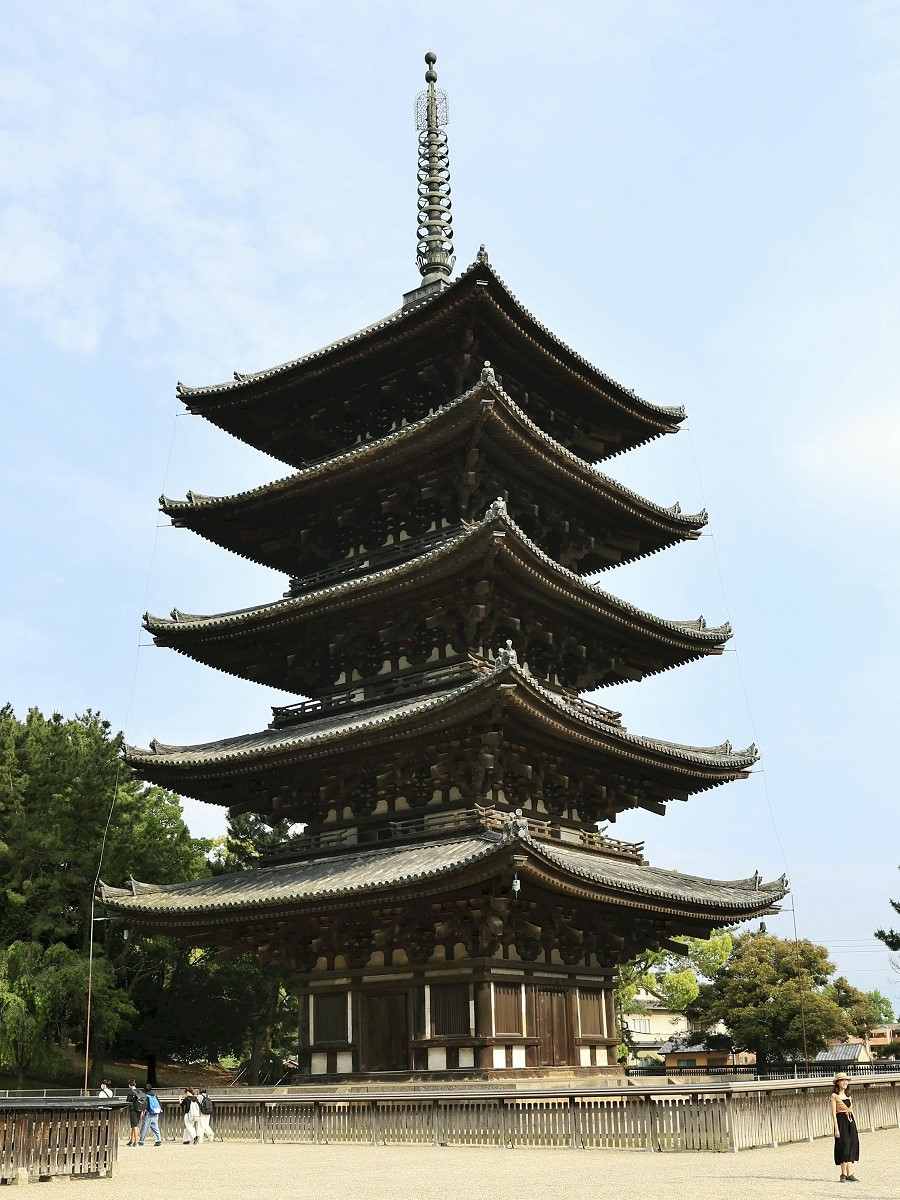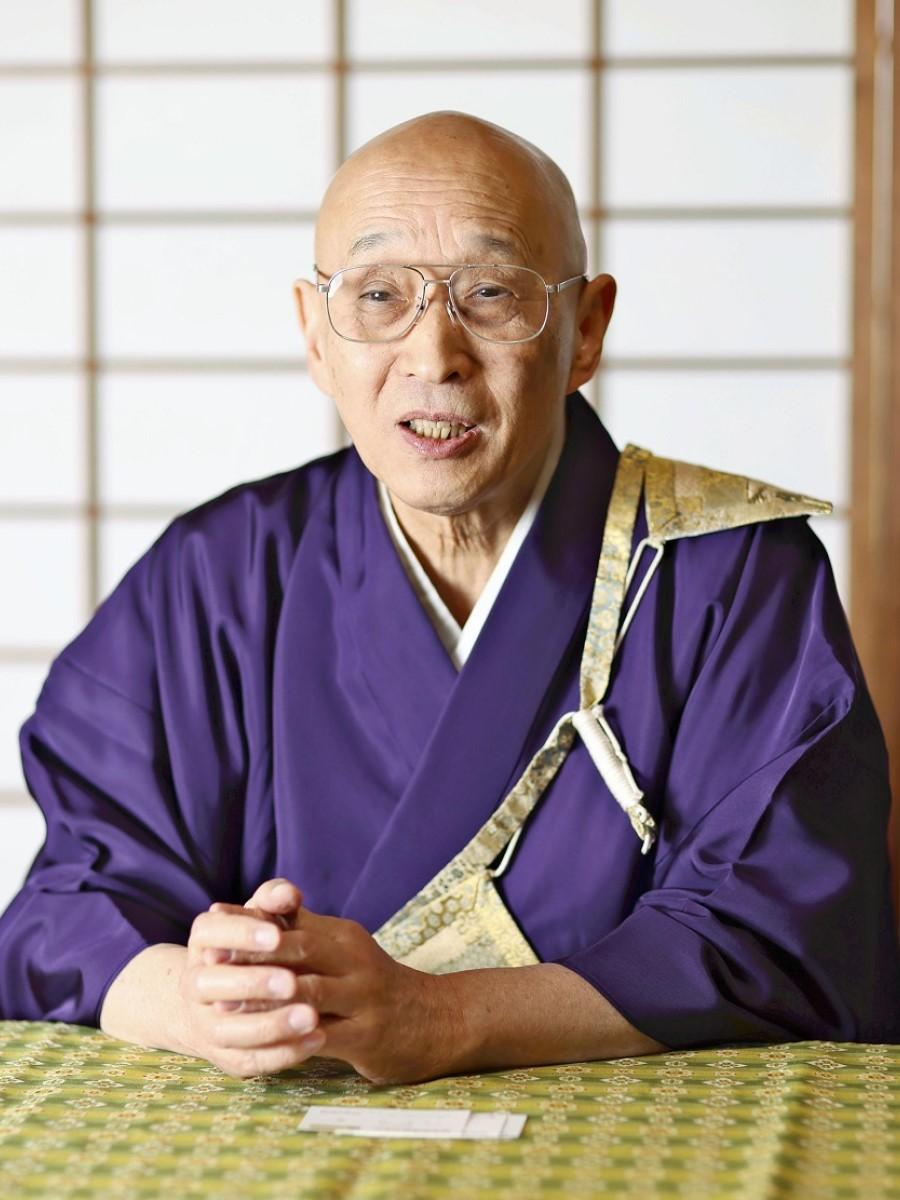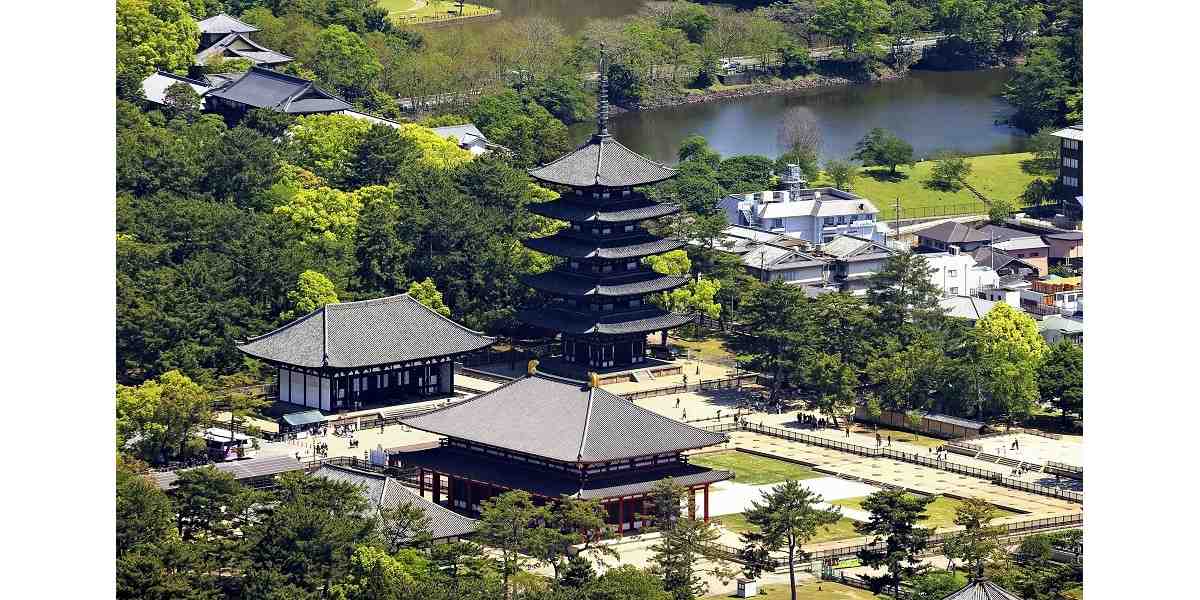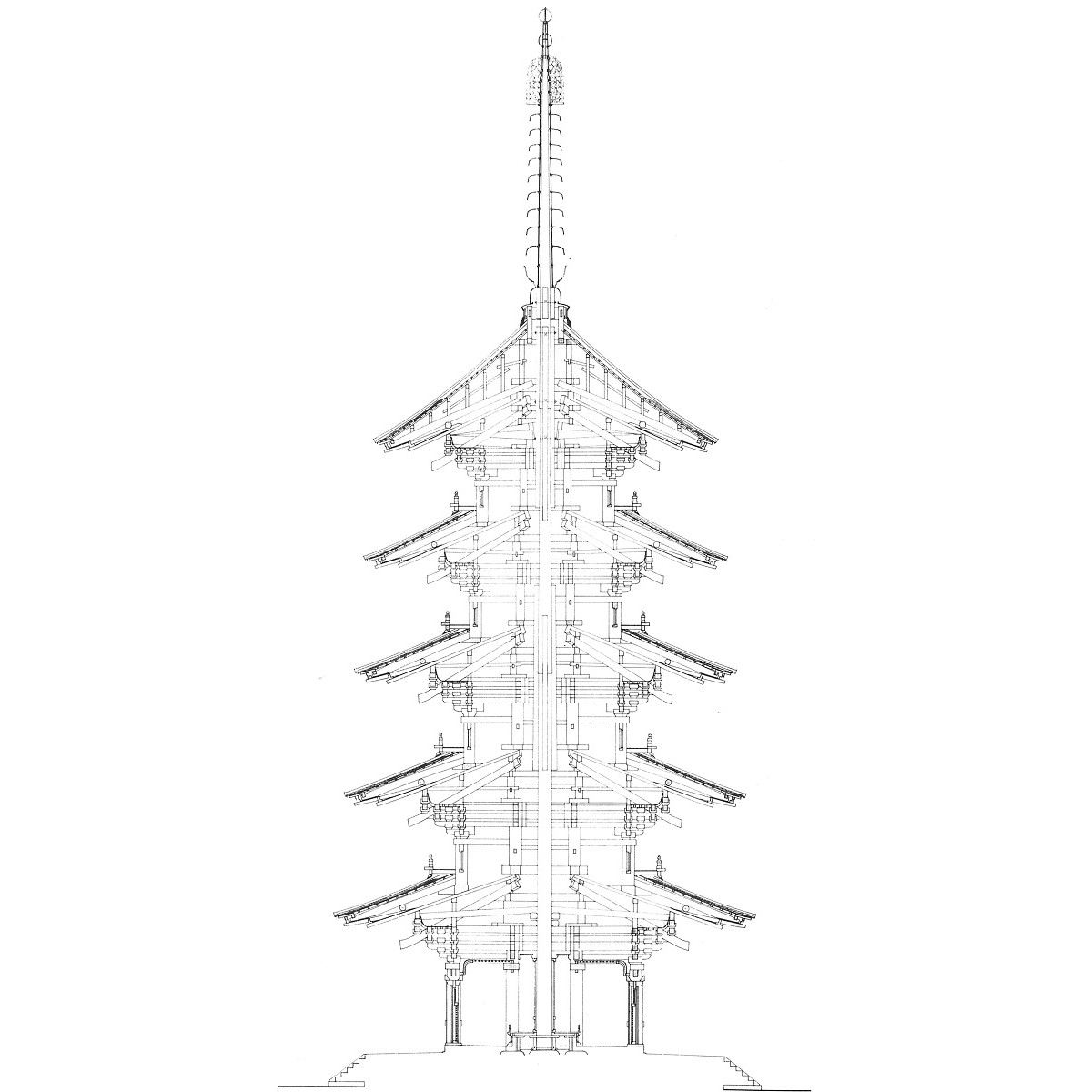
The five-storied pagoda of Kofukuji temple in Nara will undergo major repairs from July.
15:54 JST, July 2, 2023
The five-storied pagoda of Kofukuji temple in Nara will undergo large-scale repairs for the first time in about 120 years starting in July.
As the work on the tower, a national treasure that has withstood earthquakes, typhoons and other disasters, is scheduled to be completed in 2031, its architectural splendor will be hidden from public view for some time.
Kofukuji is a UNESCO World Heritage site, and its five-storied pagoda has been a symbol of the ancient capital of Japan. The temple is a popular destination for school trips in Japan and international tourists alike. Visitors seem to like taking commemorative photos with the five-storied pagoda in the background.
The temple now braces for the first major repair work to the tower since 1901.

Eishun Moriya, the abbot of Kofukuji temple, speaks about the forthcoming repair of the pagoda.
“We do not think of the pagoda as belonging only to Kofukuji,” Eishun Moriya, the 73-year-old abbot of the temple said as he looked up at the tower that rises about 50 meters. “We see it as a treasure, a cultural property of the wider public.”
The Nara prefectural government office for conservation of cultural properties inspected the tower in the fiscal year beginning April 2020 and found some misaligned or damaged roof tiles, damage to wooden eaves and stucco falling off some walls. Subsequently, a panel for the conservation and restoration of the pagoda consisting of repair experts from various fields such as architectural history and structural dynamics concluded that it should be repaired.
With the renovation of the roof tiles, fixing of the wooden components and recoating of the stucco walls, the total project cost will amount to about ¥5.7 billion.
Burned down 5 times
Legend has it that the five-storied pagoda was built in 730 according to the wishes of Empress Komyo, the daughter of Fujiwara no Fuhito, who founded the temple. Throughout its history, the pagoda had been burned to the ground five times in fires caused by lightning or other incidents but was reconstructed every time.
The current structure is the sixth version, built in 1426. It is second-tallest wooden five-storied pagoda in Japan after that of Toji temple in Kyoto, which is about 55 meters in height and designated a national treasure.
At the dawn of Japan’s modernity, the Meiji era government, which started in 1868, issued an order to separate Shintoism and Buddhism. This sparked an anti-Buddhist movement that swept over the country, pushing Kofukuji and other Buddhist temples into a tight corner. A story remains to this day that the five-storied pagoda was even put on sale.
From 1900-01, a large-scale repair was conducted. The work included overhauling the fifth story of the tower and renovating the roof tiles.
To be completed in March 2031
This time, the major repair will start with the setting of a steel-frame, roofed scaffold structure to cover the tower, which will take about a year. All sides of the tower will then be behind walls for some time to come.
“The tower will be hidden for some time, but I intend to move the restoration forward as one of the relay runners who have to pass on the legacy to future generations, in the wish that the tower lasts another century or more,” Moriya said, adding, “We’re thinking of showing to the public progress of the work during forthcoming repairs. I hope people stay interested.”
The restoration project is scheduled to end in March 2031.

Kofukuji’s five-storied pagoda towers over the temple grounds in Nara.
Five-storied pagodas
A pagoda is a Buddhist tower to enshrine the Buddha’s relics, said to be buried beneath it. The structure derives from Indian architecture, passed on through China and the Korean Peninsula, and came to Japan, where it acquired a distinctive five-storied form with a central pillar.
Among five-storied pagodas in Japan, nine have been designated as national treasures and 14 are important cultural properties. The one at the Horyuji temple in Nara is the oldest in Japan.
Of the five-storied pagodas built before the Meiji era that exist today, none of them have sustained confirmed earthquake damage, so the story goes.
There have, however, been many cases of these pagodas destroyed by other natural disasters, including lightning and fires, such as the one at Shitennoji temple in Osaka that collapsed due to Typhoon Muroto in 1934.
During World War II, a U.S. air raid in 1945 burned to the ground the five-storied pagoda at Sensoji temple in the Asakusa district of Tokyo.

A section drawing of the five-storied pagoda of Kofukuji temple
"Society" POPULAR ARTICLE
-

M4.9 Earthquake Hits Tokyo, Neighboring Prefectures
-

Israeli Tourists Refused Accommodation at Hotel in Japan’s Nagano Pref., Prompting Protest by Israeli Embassy and Probe by Prefecture
-

M7.5 Earthquake Hits Northern Japan; Tsunami Waves Observed in Hokkaido, Aomori and Iwate Prefectures
-

Tsukiji Market Urges Tourists to Avoid Visiting in Year-End
-

High School in Kyoto Says Students Shoplifted during Recent School Trip to Bali, Indonesia
JN ACCESS RANKING
-

Tokyo Economic Security Forum to Hold Inaugural Meeting Amid Tense Global Environment
-

Keidanren Chairman Yoshinobu Tsutsui Visits Kashiwazaki-Kariwa Nuclear Power Plant; Inspects New Emergency Safety System
-

Imports of Rare Earths from China Facing Delays, May Be Caused by Deterioration of Japan-China Relations
-

University of Tokyo Professor Discusses Japanese Economic Security in Interview Ahead of Forum
-

Japan Pulls out of Vietnam Nuclear Project, Complicating Hanoi’s Power Plans























